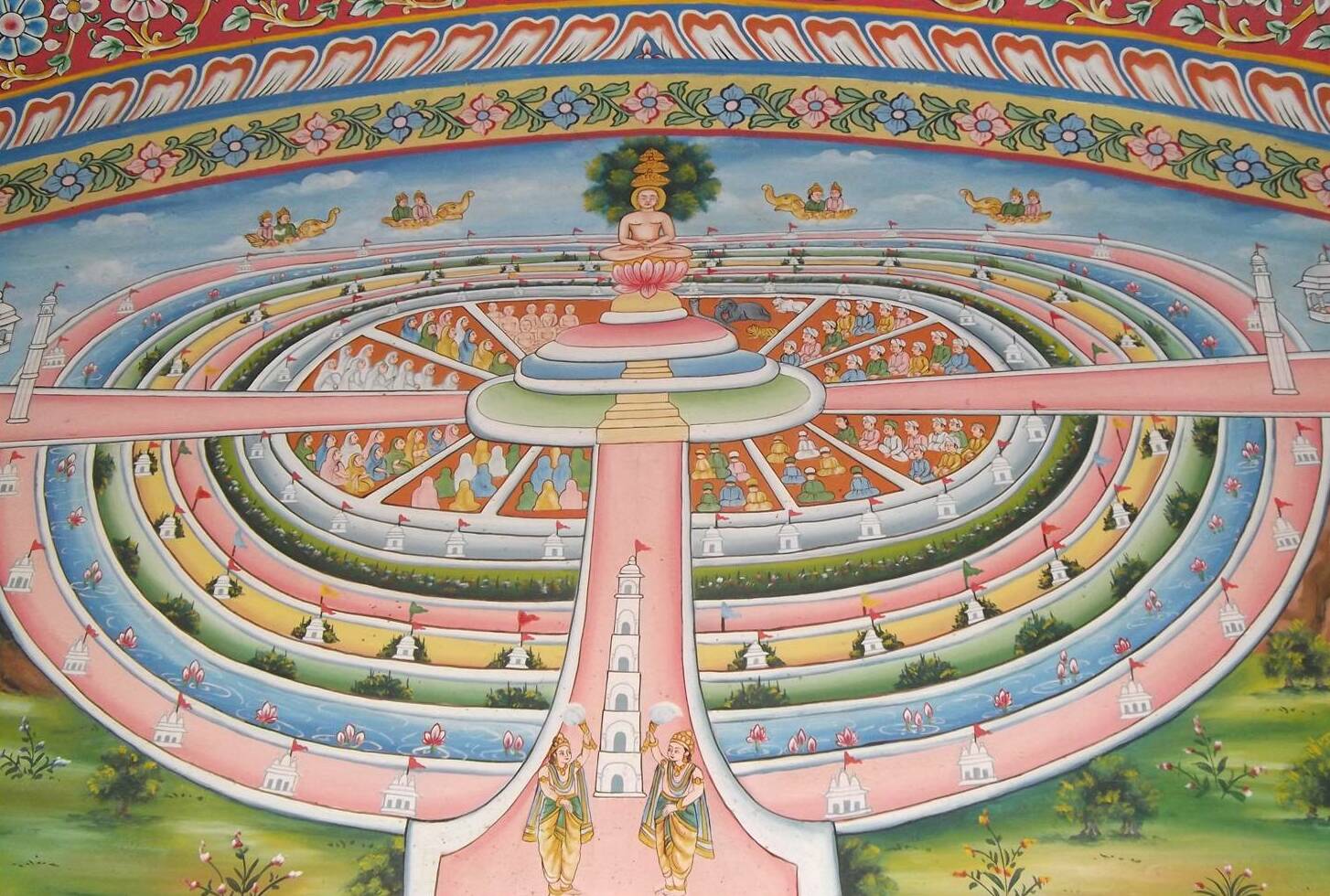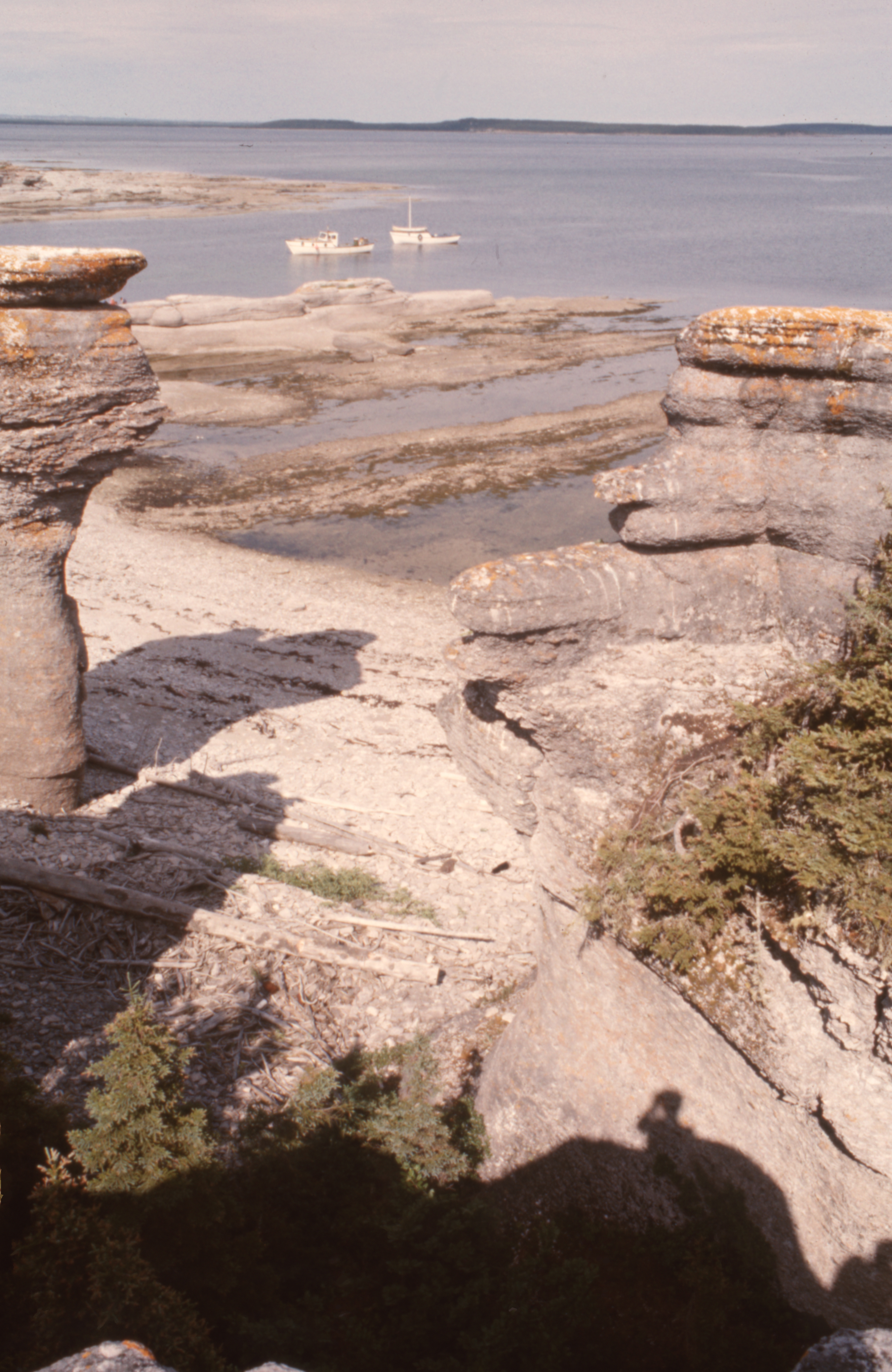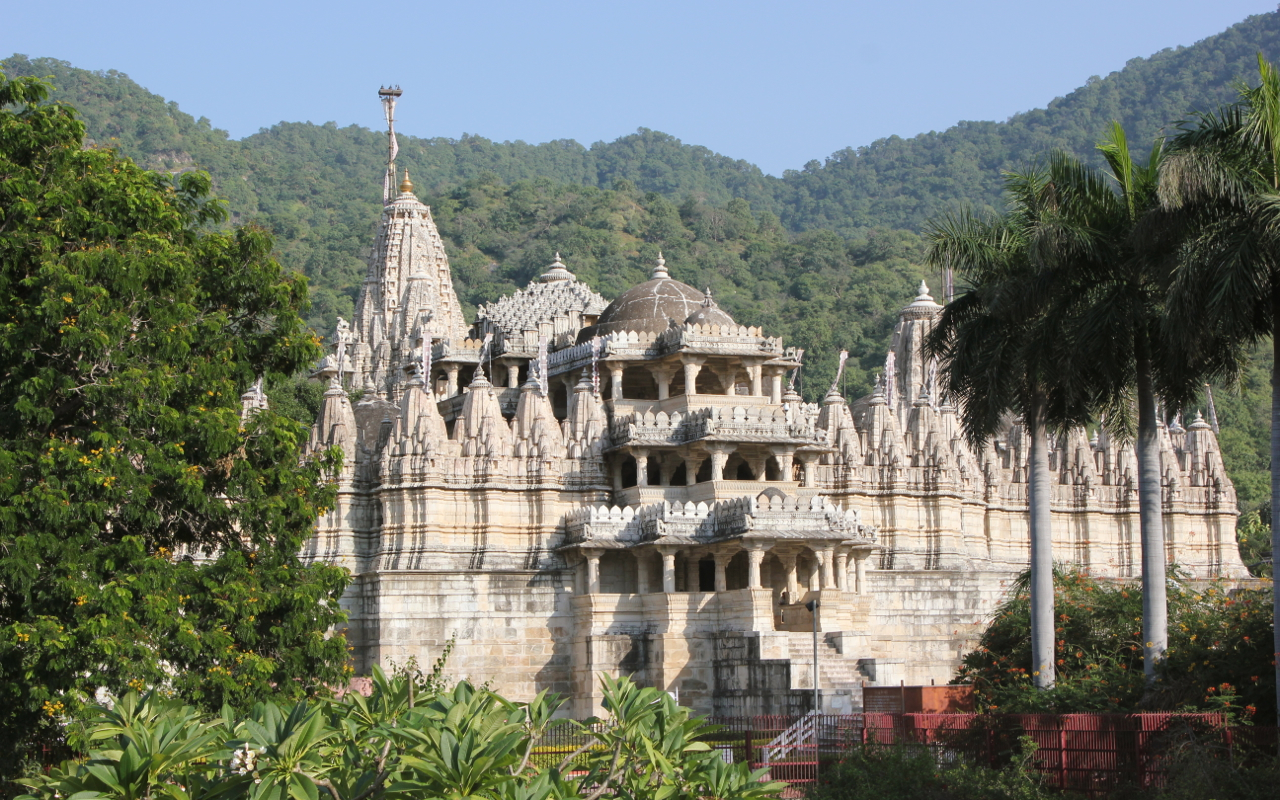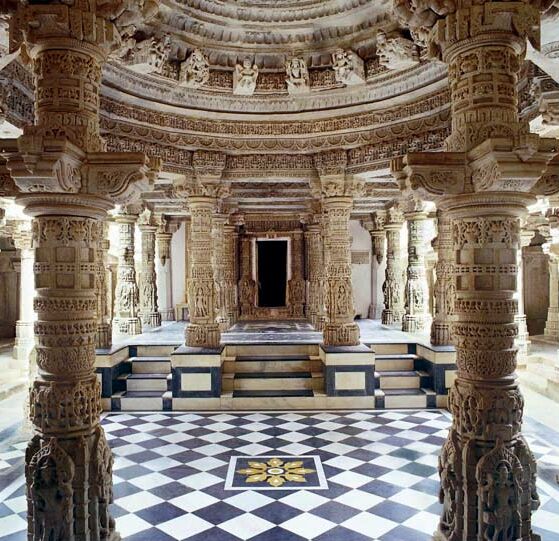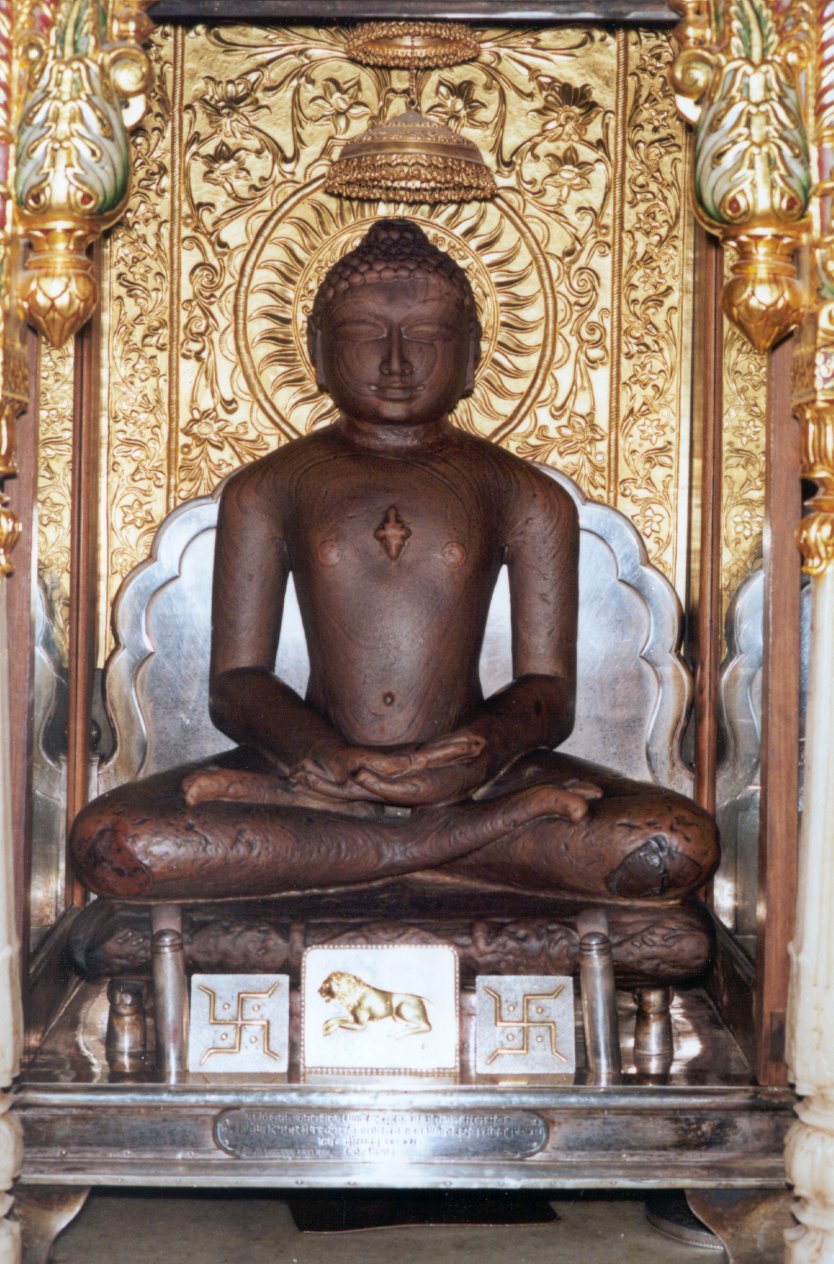|
Manasthamba
In Jainism, a ''manastambha'' () is a pillar that is often constructed in front of Jain temples or large Jain statues. In North India, they are topped by four Tirthankara images. According to the ''Digambara'' Jain texts like '' Adi Purana'' and ''Tiloyapannati'', a huge ''manastambha'' stands in front of the ''samavasarana'' (divine preaching hall) of the tirthankaras, which causes someone entering a ''samavasarana'' to shed their pride. A monolithic manastambha is a standard feature in the Jain temples of Moodabidri. They include a statue of Brahmadeva on the top as a guardian yaksha. Examples Some of the well known Jain manastambhas are: * Kirti Stambha of Chittorgarh. The Vijaya Stambha was inspired by this. * Manastambhas of Devagarh * Manastambhas of Moodabidri * Manastambhas of Shravanabelagola * Manastambha at Shikharji at Madhuvan Manastambhas in South India are generally monolithic. Photo gallery File:Hutessing Temple3 Ahmedabad.JPG, Kirti Stambha of Hutheesing ... [...More Info...] [...Related Items...] OR: [Wikipedia] [Google] [Baidu] |
Lal Mandir
Sri Digambar Jain Lal Mandir () is the oldest and best-known Jain temple in Delhi, India. It is directly across from the Red Fort in the historical Chandni Chowk area. The temple is known for an avian veterinary hospital, called the Jain Birds Hospital, in a second building behind the main temple. Located just opposite the massive Red Fort at the intersection of Netaji Subhas Marg and Chandni Chowk, Digambar Jain Temple is the oldest Jain temple in the capital. According to Jain scholar Balbhadra Jain's compendium of Digambar Jain shrines in India, it was built in 1656. History Old Delhi was founded by Mughal Emperor Shah Jahan (1628–1658) who built what is commonly known as the old city or walled city, surrounded by a wall, with the main street Chandni Chowk in front of the Red Fort, the imperial residence. Shah Jahan invited several Agrawal Jainlandlords to come and settle in the city and granted them some land south of the Chandani Chowk around Dariba Gali. Accord ... [...More Info...] [...Related Items...] OR: [Wikipedia] [Google] [Baidu] |
Ajmer Jain Temple
The Ajmer Jain temple, also known as Soniji Ki Nasiyan, is a Jain temple known for its architecture. It was built in the late nineteenth century. The main chamber, known as the Swarna Nagari "City of Gold", has several gold-plated wooden figures, depicting several figures in the Jain religion. This golden chamber of the temple uses 1,000 kg of gold to carve out a depiction of Ayodhya. Kurt Titze, in his book, "Jainism: A Pictorial Guide to the Religion of Non-Violence" (1998, p. 143), writes on Soniji Ki Nasiyan: History Greatly revered by the Digambar sect of the Jains, the Nasiyan temple is dedicated to Rishabhdev, the first of the 24 tirthankara by Rai Bahadur Seth Moolchand and Nemichand Soni. It is situated on Prithvi Raj Marg in Ajmer, the heart of Rajasthan state in India. The foundation of this magnificent Jain temple was laid on 10 October 1864 and the image of Rishabhdev (Adinath), was installed in the Sanctum Sanctorum on 26 May 1865. This work was car ... [...More Info...] [...Related Items...] OR: [Wikipedia] [Google] [Baidu] |
Samavasarana
In Jainism, Samavasarana or Samosharana ("Refuge to All") is the divine preaching hall of the Tirthankara, stated to have more than 20,000 stairs in it. The word ''samavasarana'' is derived from two words, ''sama'', meaning general and ''avasara'', meaning opportunity. It is an important feature in Jain art. The Samavasarana seems to have replaced the original Jain stupa as an object of worship. Samavasarana In samavasarana, the ''tirthankara'' sits on a throne without touching it (about two inches above it). Around the tirthankara sit the '' ganadharas'' (chief disciples). Living beings sit in the following order: *In the first hall, ascetics *In the second hall, one class of deva ladies *In the third hall, '' aryikas'' (nuns) and laywomen *In the next three halls, three other classes of deva ladies *In the next four halls, the four classes of devas (heavenly beings) *Men, in the eleventh hall *Animals, in the last hall According to Jain texts, there would be four wide r ... [...More Info...] [...Related Items...] OR: [Wikipedia] [Google] [Baidu] |
Jainism
Jainism ( ), also known as Jain Dharma, is an Indian religions, Indian religion whose three main pillars are nonviolence (), asceticism (), and a rejection of all simplistic and one-sided views of truth and reality (). Jainism traces its spiritual ideas and history through the succession of twenty-four , supreme preachers of ''dharma''. The first in the current time cycle is Rishabhadeva, who tradition holds lived millions of years ago; the 23rd is Parshvanatha, traditionally dated to the 9th century Common Era, BCE; and the 24th is Mahāvīra, Mahavira, who lived . Jainism is considered an eternal ''dharma'' with the guiding every time cycle of the Jain cosmology, cosmology. Central to understanding Jain philosophy is the concept of ''bhedavijñāna'', or the clear distinction in the nature of the soul and non-soul entities. This principle underscores the innate purity and potential for liberation within every Jīva (Jainism), soul, distinct from the physical and menta ... [...More Info...] [...Related Items...] OR: [Wikipedia] [Google] [Baidu] |
Monolith
A monolith is a geological feature consisting of a single massive stone or rock, such as some mountains. Erosion usually exposes the geological formations, which are often made of very hard and solid igneous or metamorphic rock. Some monoliths are volcanic plugs, solidified lava filling the vent of an extinct volcano. In architecture, the term has considerable overlap with megalith, which is normally used for prehistory, and may be used in the contexts of rock-cut architecture that remains attached to solid rock, as in monolithic church, or for exceptionally large stones such as obelisks, statues, monolithic columns or large architraves, that may have been moved a considerable distance after quarrying. It may also be used of large glacial erratics moved by natural forces. The word derives, via the Latin , from the Ancient Greek word (), from () meaning "one" or "single" and () meaning "stone". Geological monoliths Large, well-known monoliths include: Africa * Aso ... [...More Info...] [...Related Items...] OR: [Wikipedia] [Google] [Baidu] |
Tirtha (Jainism)
In Jainism, a ''tīrtha'' ( " ford, a shallow part of a body of water that may be easily crossed") is used to refer both to pilgrimage sites as well as to the four sections of the ''sangha''. A ''tirtha'' provides the inspiration to enable one to cross over from worldly engagement to the side of ''moksha''. Jain ''tirthas'' are located throughout India. Often a ''tirtha'' has a number of temples as well as residences (dharmashala) for the pilgrims and wandering monks and scholars. Types ''Tirtha'' sites include: * ''Siddhakshetra''s or site of ''moksha'' liberation of an '' arihant'' (''kevalin'') or Tirthankaras like Ashtapada Hill, Shikharji, Girnar, Pawapuri, Palitana, Mangi-Tungi and Champapuri (capital of Anga) * ''Atishayakshetra''s where divine events have occurred like Mahavirji, Rishabhdeo, Kundalpur, Aharji etc. * ''Puranakshetra''s associated with lives of great men like Ayodhya, Vidisha, Hastinapur, and Rajgir * ''Gyanakshetra'': associated with famous '' ... [...More Info...] [...Related Items...] OR: [Wikipedia] [Google] [Baidu] |
Jain Temple
A Jain temple, Derasar (Gujarati: દેરાસર) or Basadi (Kannada: ಬಸದಿ) is the place of worship for Jains, the followers of Jainism. Jain architecture is essentially restricted to temples and monasteries, and Jain buildings generally reflect the prevailing style of the place and time they were built. Jain temple architecture is generally close to Hindu temple architecture, and in ancient times Buddhist architecture. Normally the same builders and carvers worked for all religions, and regional and periodic styles are generally similar. For over 1,000 years, the basic layout of a Hindu or most Jain temples has consisted of a small garbhagriha or sanctuary for the main murti or idol, over which the high superstructure rises, then one or more larger mandapa halls. Māru-Gurjara architecture or the "Solanki style", is a particular temple style from Gujarat and Rajasthan (both regions with a strong Jain presence) that originated in both Hindu and Jain temples a ... [...More Info...] [...Related Items...] OR: [Wikipedia] [Google] [Baidu] |
Desur
Desur is a Town panchayat in Tiruvanamalai district in the Indian state of Tamil Nadu. Geography Desur is located at . It has an average elevation of 114 metres (374 feet). Demographics India census A census (from Latin ''censere'', 'to assess') is the procedure of systematically acquiring, recording, and calculating population information about the members of a given Statistical population, population, usually displayed in the form of stati ..., Desur had a population of 5,156. Males constitute 55% of the population and females 45%. Desur has an average literacy rate of 70%, higher than the national average of 59.5%: male literacy is 79% and, female literacy is 60%. In Desur, 10% of the population is under 6 years of age. References Cities and towns in Tiruvannamalai district Jain temples in Tamil Nadu {{Tiruvannamalai-geo-stub ... [...More Info...] [...Related Items...] OR: [Wikipedia] [Google] [Baidu] |
Saavira Kambada Basadi
Saavira Kambada Temple () or Tribhuvana Tilaka Cūḍāmaṇi), is a ''basadi'' or Jain temple noted for its 1000 pillars in Moodabidri, Karnataka, India. The temple is also known as "Chandranatha Temple" since it honours the tirthankara Chandraprabha, whose eight-foot idol is worshipped in the shrine. The town of Moodabidri is noted for its 18 Jain temples, but Saavira Kambada Temple is considered the finest among them. The temple is considered an architectural wonder and is a major attraction of Moodabidri. History The Basadi was built by the local chieftain, Devaraya Wodeyar in 1430 and took 31 years to complete, additions to temples were made in 1962. The shrine has a 50 feet tall monolith manasthambha erected by Karkala Bhairava Queen Nagala Devi. Architecture The temple is considered an architectural wonder. The temple is full of elaborate sculptures and decoration. The doorway of the temple has intricate carvings and is enclosed with ornate walls. The massive pillar ... [...More Info...] [...Related Items...] OR: [Wikipedia] [Google] [Baidu] |
Jain Center Of Greater Phoenix
Jain Center of Greater Phoenix (JCGP) is a Jain temple in Phoenix, Arizona. It was established in 2008. It represents about 150 families in the Phoenix metro area. History Of the total Jain population in Phoenix, about half live in the East Valley. Most arrived in the 1980s, at which time they did not have a permanent meeting place and met in local elementary schools. In 2005, JCGP acquired 4 acres of land for building a Jain Temple in Phoenix. Pratistha event was held from December 20 to December 26, 2008. The temple is located at 6250 S. 23rd Ave. The Hindu community also has a temple on another four acres next to the Jain Center, known as the Shree Nathji temple. Architecture The building uses white Makrana marble on the inside. The primary deities have been brought in from India, 51-inch high statues of Mahavir and Adinath. Behind the primary deities, 24 inches have been carved out to include 15-inch-high statues of tirthankars. Above the sanctum sanctorum, a 61 feet p ... [...More Info...] [...Related Items...] OR: [Wikipedia] [Google] [Baidu] |
Shri Mahavirji Temple
Shri Mahavir Ji is an important and prominent Jain pilgrimage site situated in Shri Mahaveerji town in Hindaun Block, Karauli district in Rajasthan. Given the importance of the religious place, the Indian Railways has specifically developed a railway station under West Central Railway zone by the name of Shri Mahaveerji railway station which is 10 minutes drive from the temple and temple authorities have arranged for regular buses from the station to the temple. The temple is visited by millions of Jain and Hindu devotees every year. Main temple There are five temples in Shri Mahavirji. Atishaya Kshetra Shri Mahavirji is considered one of the miraculous pilgrimages of Jains. This pilgrimage is situated at banks of Gambhir river in Hindaun Block of Karauli district, Rajasthan. Built at the bank of a river, this pilgrimage is a prominent centre of devotion for Digambar Jain devotees. Chandanpur Mahavirji temple is hailed as the heart of pilgrimages. The temple is vis ... [...More Info...] [...Related Items...] OR: [Wikipedia] [Google] [Baidu] |


